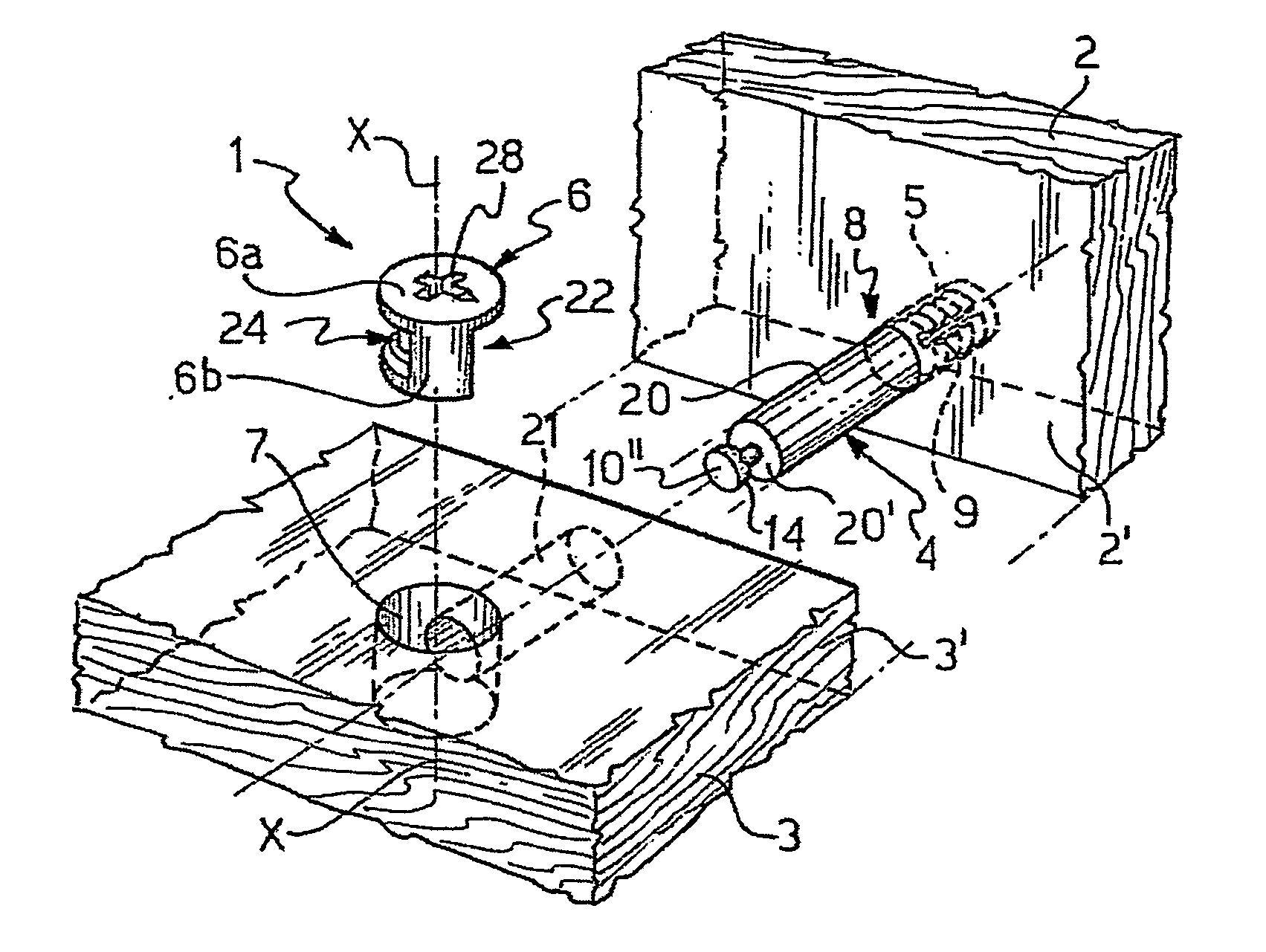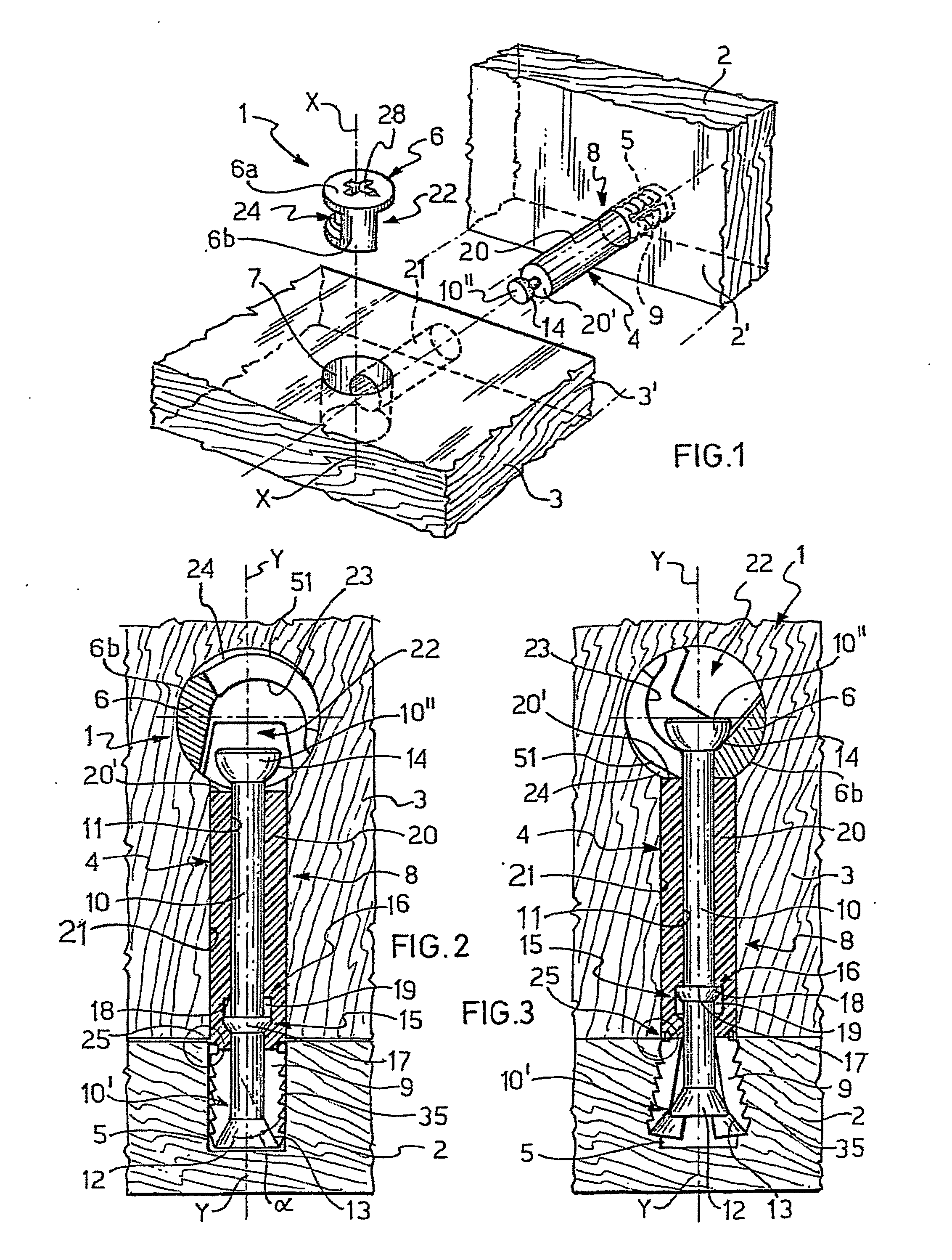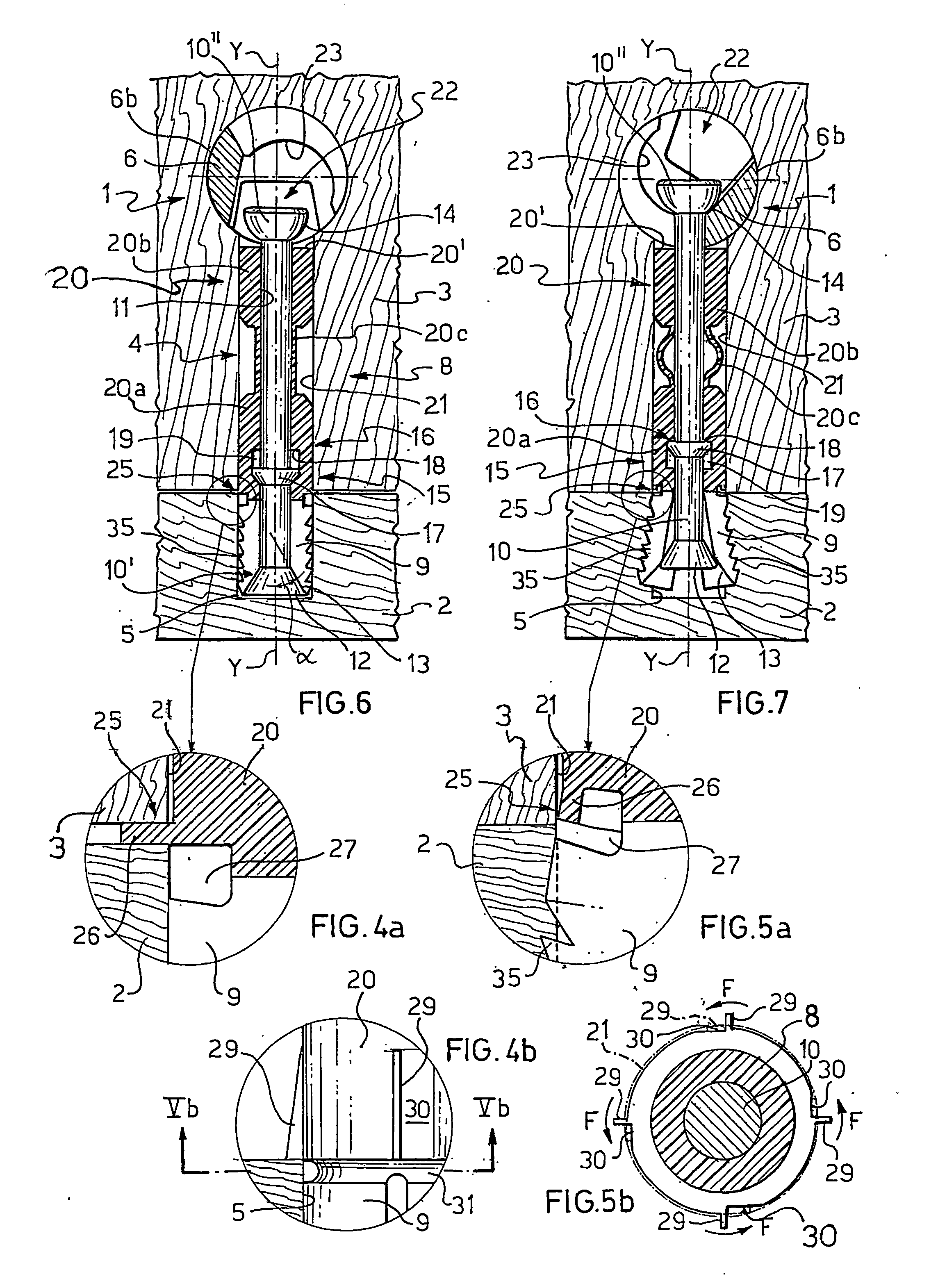Device and method for detachably connecting abutting structural parts and tie member for use to form said device
a technology of abutting structural parts and ties, which is applied in the direction of furniture joining, rod connection, ropes and cables for vehicles/pulleys, etc., can solve the problems of damage to the assembled piece of furniture, inability to firmly maintain the relationship between the two furniture parts, and the assembler's considerable time and labor. , to achieve the effect of reducing time and labor
- Summary
- Abstract
- Description
- Claims
- Application Information
AI Technical Summary
Benefits of technology
Problems solved by technology
Method used
Image
Examples
Embodiment Construction
[0123] With reference to FIGS. 1-3, 4a and 5a, a first embodiment of a connecting device according to the invention is generally indicated at 1.
[0124] The connecting device 1 allows to detachably connect two abutting structural parts 2, 3 for example two flat furniture panels which, for the sake of simplicity, have in each case only been shown in part.
[0125] As is customary in this field, the panels 2, 3 are to be connected together in such a manner that they extend at a right angle to each other and the panel 2 has its front surface 2′ resting against the side surface 3′ of the panel 3.
[0126] In this connection, however, it is to be understood that the connecting device 1 of the invention also allows to detachably connect two abutting structural parts inclined at an angle different from 90° provided that the cooperating parts of the device 1 and of the bores formed in the panels 2, 3 and designed to house the same, which will be illustrated in the following, are suitably oriente...
PUM
| Property | Measurement | Unit |
|---|---|---|
| Angle | aaaaa | aaaaa |
| Thickness | aaaaa | aaaaa |
| Distance | aaaaa | aaaaa |
Abstract
Description
Claims
Application Information
 Login to View More
Login to View More - R&D
- Intellectual Property
- Life Sciences
- Materials
- Tech Scout
- Unparalleled Data Quality
- Higher Quality Content
- 60% Fewer Hallucinations
Browse by: Latest US Patents, China's latest patents, Technical Efficacy Thesaurus, Application Domain, Technology Topic, Popular Technical Reports.
© 2025 PatSnap. All rights reserved.Legal|Privacy policy|Modern Slavery Act Transparency Statement|Sitemap|About US| Contact US: help@patsnap.com



